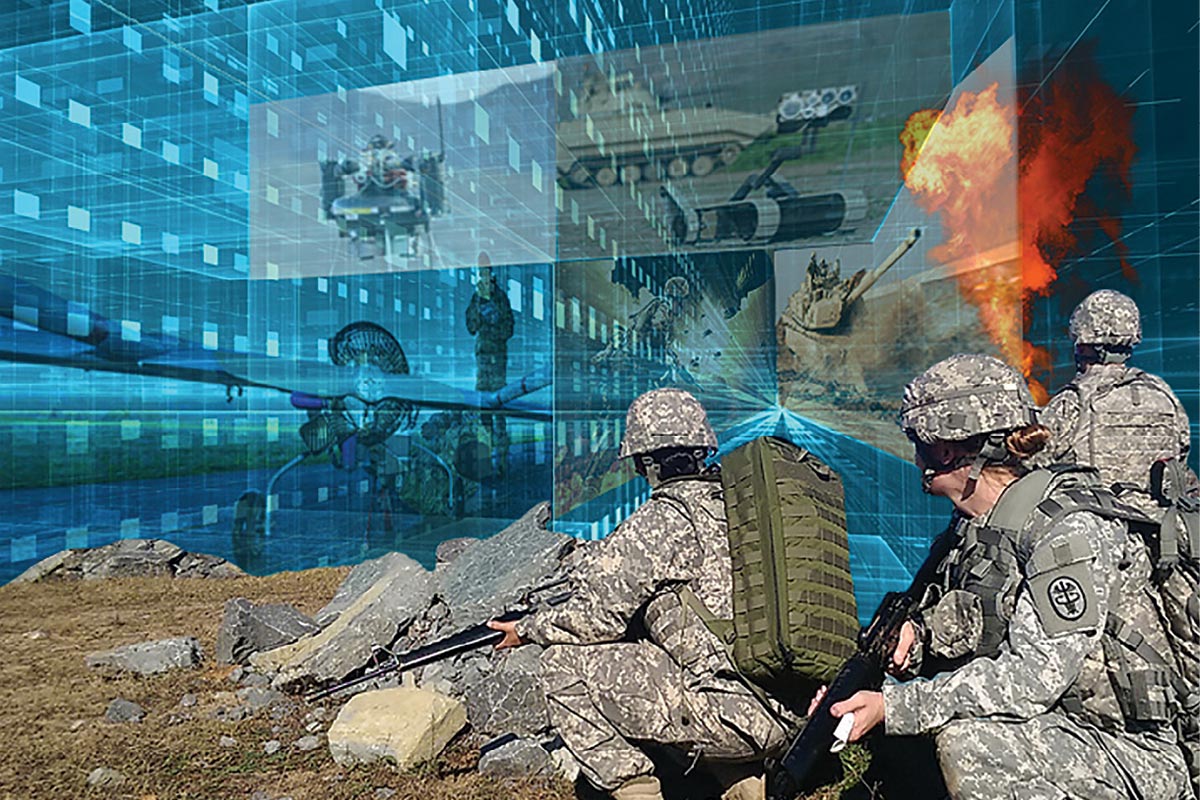In what could be the first-ever acknowledgment of the use of Artificial Intelligence (AI) in modern warfare, the US military recently divulged that they had used AI to identify targets and destroy them. While the technological advancement is not new – Israel has been using AI for quite some time – it would see acceptance and utilization by more nations in future wars.
Schuyler Moore, the chief technology officer for US Central Command overseeing military activities in the Middle East, revealed that machine learning algorithms capable of self-learning to recognize objects played a crucial role in identifying targets for over 85 US air strikes on February 2.
These strikes, executed by US bombers and fighter aircraft, were directed at seven facilities situated across Iraq and Syria. The Pentagon confirmed that the targets of these strikes included rockets, missiles, drone storage facilities, and militia operations centers.
These operations were conducted in response to an attack on January 28 that resulted in the deaths of three US service members at a base in Jordan, an incident attributed to Iranian-backed militias.
Moore told Bloomberg News, “We’ve been using computer vision to identify where there might be threats.” She noted a surge in targeting opportunities over recent months, particularly in the ongoing efforts to locate numerous rocket launchers deployed by hostile entities within the region.
While the military had previously acknowledged the use of computer vision algorithms for intelligence gathering, Moore’s statements represent the explicit confirmation to date of the US military’s utilization of such technology to identify and engage enemy targets.

Further, Moore highlighted the broader scope of AI systems’ contributions, citing their role in identifying rocket launchers in Yemen and surface vessels in the Red Sea.
The US Central Command has reported the successful destruction of several such targets through multiple weapons strikes conducted throughout February.
Use Of Artificial Intelligence (AI)
The algorithms for targeting were developed as part of Project Maven, an initiative launched by the Pentagon in 2017 to expedite the integration of AI and machine learning across the Defense Department.
The project is characterized as the Department of Defense’s foremost artificial intelligence tool, specifically engineered to analyze imagery and full-motion video captured by drones and autonomously identify potential targets.
This initiative is aimed to bolster defense intelligence efforts, with a focus on prototypes that are tailored to the US campaign against Islamic State militants.
Moore said that US forces in the Middle East have been testing computer vision algorithms capable of identifying and locating targets using imagery from satellites and other data sources.
These algorithms were initially trialed in exercises over the past year before being deployed in actual operations following the October 7 attack by Hamas on Israel and subsequent military action in Gaza.
:quality(70)/cloudfront-us-east-1.images.arcpublishing.com/archetype/LFVFZSZNRZHIHKMH6KS5KOZSMY.jpg)
Overall, the project holds paramount importance for the US military due to its extensive presence and the magnitude of operations across diverse regions confronting various types of threats.
Atlantic Council pointed out that the US military confronts a multitude of significant and diverse challenges across its geographic combatant commands, exemplified by the US Indo-Pacific Command (INDOPACOM).
INDOPACOM spans a larger area of the globe than any other combatant command and encompasses the Department of Defense’s primary concern: the “pacing challenge” posed by China.
It also includes various potential military and geopolitical flashpoints, numerous US allies and partners, and a growing array of security threats.
Similarly, the US Central Command (CENTCOM) presents a complex operational environment. Encompassing nearly 4 million square miles, CENTCOM oversees critical waterways, active conflict zones, instances of ethnic and sectarian strife, and a diverse range of security challenges that impact regional stability and US national interests.
Although each command faces distinct challenges, the sheer size and complexity of contemporary security threats strain the available resources to deter, detect, assess, or respond promptly to rapidly evolving crises.
The use of Artificial Intelligence emerges as a viable solution to navigate this increasingly intricate threat landscape while operating within resource constraints.
The United States is not alone in employing technology on the modern battlefield. Israel is also recognized as a prominent player in this domain.
In May 2021, the Israeli military announced that following the 11-day conflict in Gaza, Israel had engaged in what was described as its first “AI war,” utilizing advancements in machine learning and sophisticated computing technology.
Reports indicate that during the ongoing Israel-Hamas conflict, the IDF expanded the use of such technologies to select bombing targets in Gaza. Specifically, they employed an AI target-generation platform known as “the Gospel.”
- Contact the author at ashishmichel(at)gmail.com
- Follow EurAsian Times on Google News




